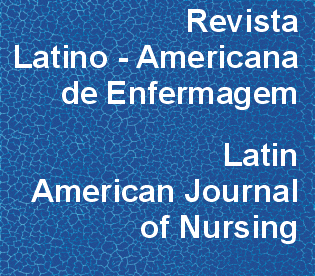Dependencia nicotínica en los trastornos mentales, relación con indicadores clínicos y el sentido para el usuario
DOI:
https://doi.org/10.1590/0104-1169.3549.2468Resumen
OBJETIVO: identificar el grado de dependencia nicotínica entre esquizofrénicos y pacientes de otros trastornos mentales, internados en hospital general, correlacionando estos índices con indicadores clínicos y el sentido para el usuario. MÉTODO: estudio realizado en unidad psiquiátrica de hospital general, entrevistando 270 pacientes de trastorno mental con cuestionario y aplicando la prueba de Fagerstrom. Se realizó un análisis estadístico descriptivo de los datos y el análisis temático del contenido. RESULTADOS: entre los 270 pacientes de trastorno mental, 35,6% eran fumadores; 53,2% con dependencia nicotínica elevada o muy elevada. De los 96 fumadores, 32 (33,3%) eran esquizofrénicos, entre los cuales 59,4% tenían dependencia elevada o muy elevada. Mayor dependencia también fue encontrada entre 59 ancianos (61,5%) y 60 sujetos con enfermedades concomitantes somáticas (62,5%). Significados del tabaquismo para los sujetos: ayuda a olvidar problemas y enfrentar conflictos diarios; alivia efectos colaterales de los medicamentos; autocontrol; distracción; y, hace parte de la vida. CONCLUSIÓN: la dependencia del tabaco, más intensa entre esquizofrénicos, es justificada porque los ayuda a enfrentar las dificultades de la enfermedad. Los enfermeros ocupan una posición estratégica en el cuidado.Descargas
Los datos de descarga aún no están disponibles.
Descargas
Publicado
2014-07-01
Número
Sección
Artículos Originales
Licencia
Los derechos de autor son propiedad exclusiva de la Revista Latino-Americana de Enfermagem (RLAE), transferidos a través de la Declaración de Transferencia de Derechos de autor (que está en el formulario individual de declaración) firmada por los autores. Para el uso de artículos, RLAE adopta la Licencia Creative Commons CC BY-NC atribución no comercial (abstracto o código completo de licencia). Con esta licencia es permitido acceder, descargar (download), copiar, imprimir, compartir, reutilizar y distribuir los artículos, desde que para uso no comercial y con citación de la fuente, dando los créditos de autor a la Revista Latino-Americana de Enfermagem. En tales casos, no se necesita permiso de los autores o editores.Cómo citar
Oliveira, R. M. de, Carlos Siqueira Júnior, A., Santos, J. L. F., & Furegato, A. R. F. (2014). Dependencia nicotínica en los trastornos mentales, relación con indicadores clínicos y el sentido para el usuario . Revista Latino-Americana De Enfermagem, 22(4), 685-692. https://doi.org/10.1590/0104-1169.3549.2468



